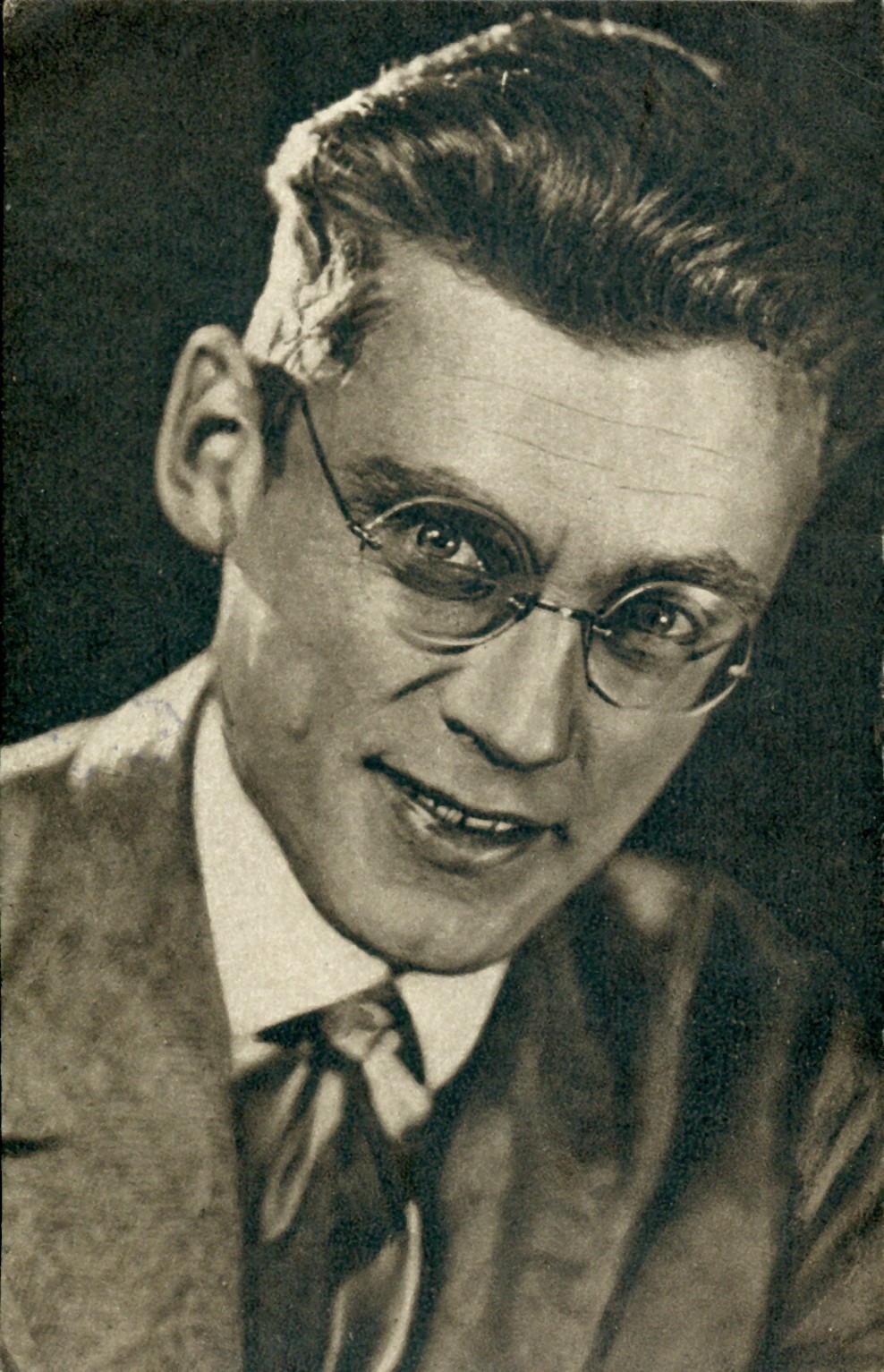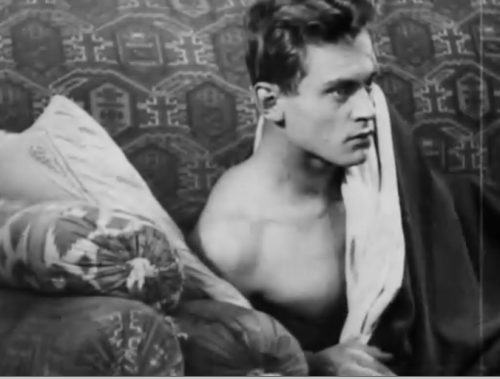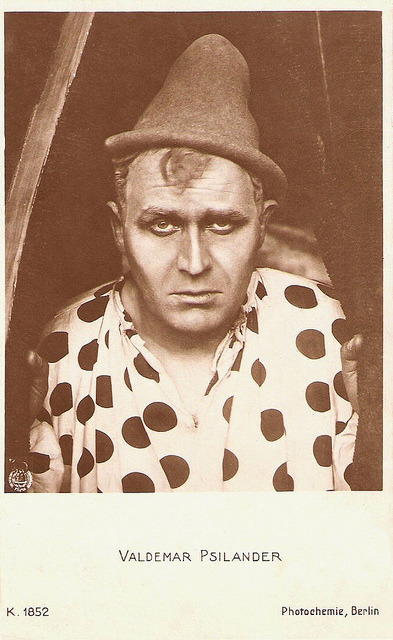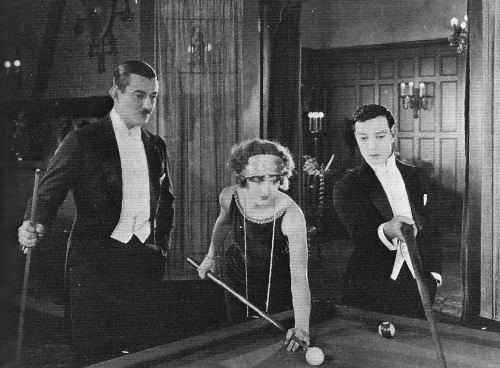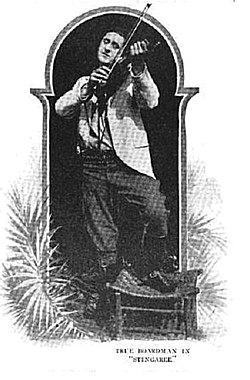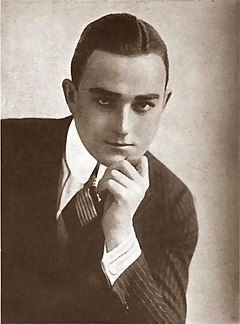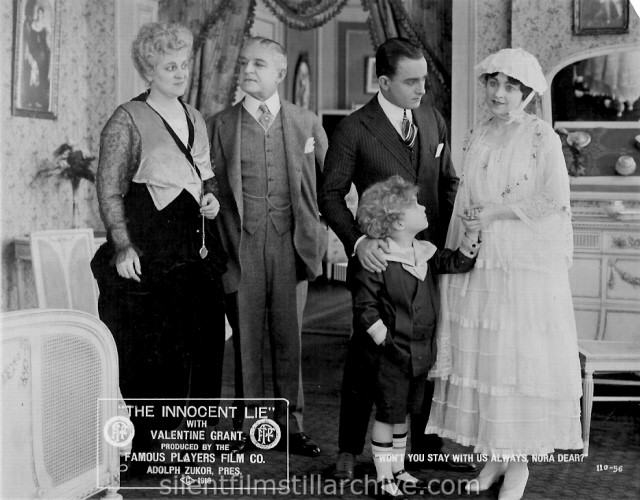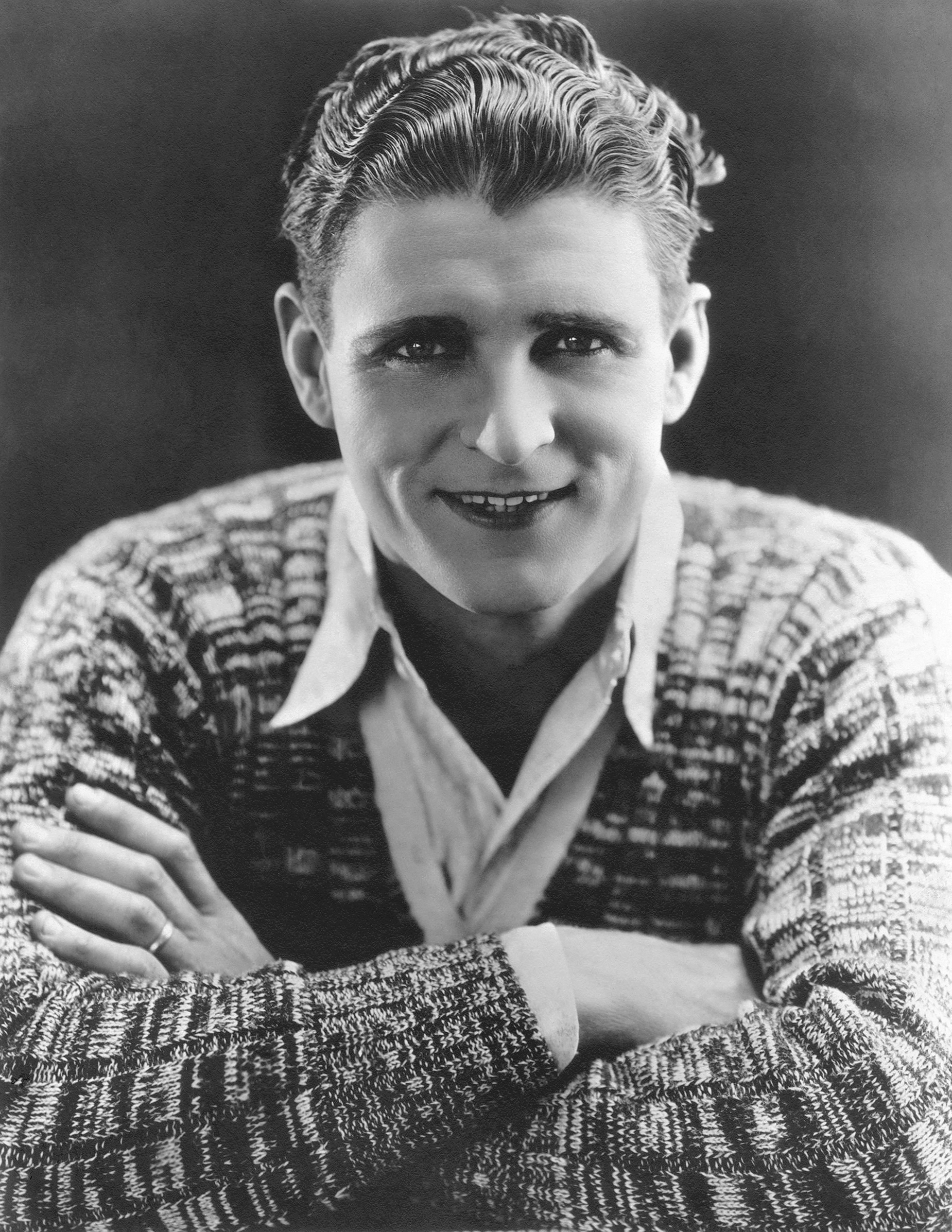Vladimir Fogel was born sometime in 1902 in Moscow, Russia.
I don't know anything about his early life. What I do know about him begins when he was in college and enrolled at the Institute of Cinematography. One of his teachers was a well known Russian director, Lev Kuleshov who immediately took to Vladimir and gave him his big break.
Vladimir made his screen debut in the 1924 film, The Extraordinary Adventures of Mr. West in the Land of the Bolsheviks (got all that?).
His film career only lasted for four years with about thirteen titles under his belt. The only well known costar I could find of his (or one that at least made a crossover to Hollywood that I recognized) was Anna Sten who he appeared with in two films.
He was quite popular during his short career, and his good looks were not a small part of that popularity. His looks worked well with his choice in roles, the edgier the better!
He made his last screen appearance in the 1928 film, Salamandra.
Vladimir Fogel passed away on June 8, 1929 in Moscow. He was 26 years old. Apparently he had been suffering from depression since the previous year and had proceeded to get worse. He ended up committing suicide by gunshot (I could have sworn I read that is how it happened, but I can't remember where I found that out).
He was interred at the Donskoi Monastery Cemetery in Moscow.
Good news for silent film fans, a lot of his work survives and is available for viewing. Yay!!
He was sometimes credited as "V.P. Fogel" in his films, which stood for Vladimir Pavlovich Fogel.
As you can see, there isn't a lot of information out there about Vladimir, I don't even know the exact date he was born. I wanted to include him though because he was an early screen idol in Russia and I believe he definitely deserves to be remembered. Especially if a lot of his work survives!
************************************
Tom Forman was born on February 22, 1893 in Mitchell County, Texas. I exhausted myself looking up census information on Tom and I THINK I found his record, but I am not 100% sure that it is him. From what I have found, I believe his parents names were Joseph/Josiah and Mary Forman. Again, this isn't set in stone, this is just based off one record I found that had some information that lined up.
Just like the former entry about Vladimir Fogel, I don't know anything about his early life. I believe he moved to California after college with his parents because they did in fact live there as well while their son was making pictures.
He made his film debut in the 1913 short, The Treachery of a Scar.
His career lasted for over ten years and consisted of over sixty film appearances, which is quite a feat. Also factor in that during this time he also was sent overseas to fight when WWI broke out.
Some of his costars at the time included May Allison, Ina Claire, Noah Beery, and Gloria Swanson.
On top of being an actor, Tom also worked as a director, directing his first film short in 1914 after being in the business for a few months. Some of the films he directed include Shadows (1922) starring Lon Chaney, The Virginian (1923) starring Kenneth Harlan and Florence Vidor, and The Crimson Runner (1925) starring Priscilla Dean and Alan Hale. Tom also worked as a writer on seven films beginning in 1915.
After 1923 his career begin to slightly falter. It seemed he had reached his high point with The Virginian and after that he began working in poverty row films just to keep paying the bills.
Tom was hired by Columbia studios in 1926 to direct their new film, The Wreck. A date to start filming was set and everything seemed to be on the up and up. Alas, it was not to be.
Tom Forman passed away on November 7, 1926 at his parent's home in Venice, California. He was 33 years old.
He was buried at Hollywood Forever Cemetery. His grave marker reads "Lieut. Tom Forman."
Just like the former entry about Vladimir Fogel, I don't know anything about his early life. I believe he moved to California after college with his parents because they did in fact live there as well while their son was making pictures.
He made his film debut in the 1913 short, The Treachery of a Scar.
His career lasted for over ten years and consisted of over sixty film appearances, which is quite a feat. Also factor in that during this time he also was sent overseas to fight when WWI broke out.
Some of his costars at the time included May Allison, Ina Claire, Noah Beery, and Gloria Swanson.
On top of being an actor, Tom also worked as a director, directing his first film short in 1914 after being in the business for a few months. Some of the films he directed include Shadows (1922) starring Lon Chaney, The Virginian (1923) starring Kenneth Harlan and Florence Vidor, and The Crimson Runner (1925) starring Priscilla Dean and Alan Hale. Tom also worked as a writer on seven films beginning in 1915.
After 1923 his career begin to slightly falter. It seemed he had reached his high point with The Virginian and after that he began working in poverty row films just to keep paying the bills.
Tom was hired by Columbia studios in 1926 to direct their new film, The Wreck. A date to start filming was set and everything seemed to be on the up and up. Alas, it was not to be.
Tom Forman passed away on November 7, 1926 at his parent's home in Venice, California. He was 33 years old.
He was buried at Hollywood Forever Cemetery. His grave marker reads "Lieut. Tom Forman."
Tom was married once, but I do not know from when to when. Her name was Mary Mersch, and she was also an actress. The couple supposedly had a child together, but again, do not know when or even the gender.
He was the first cousin of actress, Madge Bellamy but I don't know where the link is.
He was the first cousin of actress, Madge Bellamy but I don't know where the link is.
*****************************************
Evelyn Nelson was born on November 13, 1899 in Chloride, Arizona. She was the second daughter born to William and Georgia Nelson. Her sister, Pauline was a year older.
She made her screen debut in the 1920 Charley Chase directed short, Don't Park Here.
In the span of three years, Evelyn appeared in about twenty films. One of her more well known costars included Oliver Hardy who she starred with in five of her earlier films. This was back when he was credited on screen as "Babe Hardy." She seemed to be a wonderful comedic actress.
Her last film appearance was in 1923's Desert Rider.
 |
| Evelyn and her frequent costar Jack Hoxie |
Evelyn Nelson passed away on June 16, 1923 in Los Angeles. She was just 23 years old. It had been days since anyone had seen or talked to Evelyn. She lived with her mother at the time, but her mother was out of town visiting relatives. When she returned home, she found her daughter lying dead in a gas filled room in their house. Two notes were found in the room, one talked about how she was tired and so she wanted to end her life. The second note was very interesting, it read: "I am just about gone and will soon be with my friend Wally." The "Wally" in the letter was Wallace Reid who had died in January of that year after struggling with addiction to morphine. I do not know where she is buried.
***************************************
Valdemar Einar Psilander was born on May 9, 1882 in Copenhagen, Denmark.
When he was a teenager he began working at a theater in his hometown and appeared in various plays.
He made his screen debut as the title character in a 1910 version of The Portrait of Dorian Gray.
Valdemar made a big splash right away in the European film industry. He was voted the favorite male movie star in a magazine poll after only being in films for two years! He was very popular in his home country of Denmark as well as Germany, Russia, Hungary, and even as far as Brazil! He was in high demand, and it shows when you look at his body of work. Over 80 films in a span of 10 years!
His last film appearance was in 1917's Hjertekrigen paa Ravnsholt.
Valdemar Psilander passed away on March 6, 1917 in Copenhagen, Denmark. He committed suicide at age 32.
He was buried at the Taarbaek Cemetery in Copenhagen.
I have read that there was perhaps more drama that unfolded after Valdemar died.
Apparently the founder of Nordisk Film, Valdemar's home studio for over six years, managed to get a hold of Valdemar's body, moved it to his dressing room on the sound stage and made it look like he had been shot in a lover's quarrel. The press and movie fans alike ate up the story and Nordisk made a killing when they released over ten additional films featuring Valdemar posthumously. Apparently the dressing room where this whole scene took place is still intact and can be seen through a tour of the studio. Pretty cool.
Valdemar was married once, to Edith Buemann, and I am not sure of when they were married or if they were still in fact married at the time of his death.
Valdemar was married once, to Edith Buemann, and I am not sure of when they were married or if they were still in fact married at the time of his death.
 |
| Valdemar and equally famous screen star, Asta Nielsen. |
"...One can perhaps learn to become an actor but you can never learn to be filmed. Studied emotions on film become artificial and false. Film relentlessly demands truthfulness and sincerity." ~~ Valdemar Psilander
